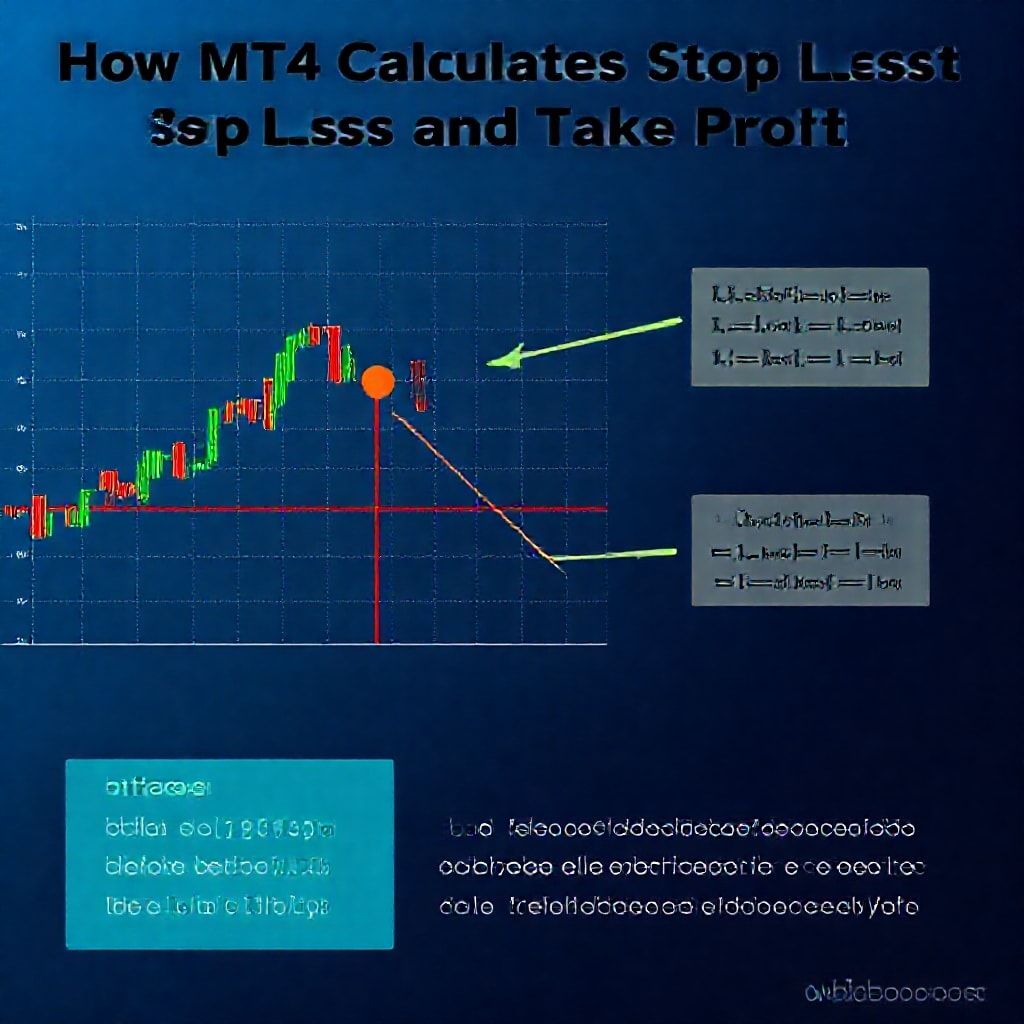How does MT4 calculate stop loss and take profit levels?
How MT4 Calculates Stop Loss and Take Profit Levels
Introduction
If you’re trading on MT4, stop loss and take profit are your built‑in guardrails. You set them, the platform holds to your levels, and the market decides whether those levels become a profit or a risk cushion. But the exact way MT4 translates your SL/TP into concrete price levels matters—especially as volatility shifts, spreads widen, or you’re juggling forex, stocks, crypto, indices, options, or commodities in a web3 world.

What MT4 does under the hood
- SL/TP are price targets attached to an order. For a buy, your SL sits below entry and TP above; for a sell, the opposite. The distance is defined in pips (or points), and MT4 converts that distance into a concrete price using the instrument’s price digits.
- Pips and digits differ by asset. Most forex pairs are quoted to 4 or 5 decimals (a pip is typically 0.0001; a pipette is 0.00001). JPY pairs use 2 decimals for a pip (0.01). Stocks, indices, and commodities have their own tick sizes, so MT4 adapts the SL/TP in price terms accordingly.
- Execution isn’t always a perfect “hit.” If the market gaps, slides through, or the spread widens, your SL or TP may fill at a less favorable price than you specified. Slippage and spread are real-world quirks that MT4 factors into how orders are filled.
- Pending orders vs market orders. When you place a pending order with SL/TP, those levels become fixed reference points, while market orders bring the live spread into play at the moment of execution.
A practical example
Imagine you buy EURUSD at 1.1000 with SL at 1.0980 and TP at 1.1030. On a 5‑digit quote, that’s a 20-pip SL (0.0020) and a 30-pip TP (0.0030). If price climbs to 1.1030, you’re flat at +30 pips. If price drops to 1.0980, you’re stopped out at -20 pips. If price gaps to 1.0975, you may be filled at a worse level depending on liquidity and the broker’s execution policy. Understanding these mechanics helps you choose SL/TP distances that align with your risk tolerance and market context.
Asset classes and what to watch
- Forex: SL/TP often express distance in pips; liquidity and sessions matter for fill quality.
- Stocks/indices/commodities: Contract specifications and tick sizes differ; check the instrument’s digits to translate pips into price distance accurately.
- Crypto: Higher volatility means wider spacing and tighter risk controls become crucial; spreads can be stubborn during fast moves.
- Options: SL/TP are tricky because derivatives move with multiple greeks; many traders use synthetic levels or hedge with additional positions.
Risk management and leverage considerations
- Use volatility as a compass. A simple rule is to align SL with average true range (ATR) bands rather than a fixed distance during quiet days. In volatile markets, widen SL or shorten TP to manage risk.
- Cap risk per trade. A common practice is risking only a small percentage of your account on any single trade; pair that with a conservative SL/TP ratio.
- Backtest and demo-trade. See how your SL/TP choices perform across different assets and regimes before going live. Paper trading helps you tune for slippage, spreads, and execution realities.
Web3, DeFi and the road ahead
- DeFi and on-chain price feeds bring new data sources but also new risks: oracle delays, liquidity fragmentation, and smart‑contract risk. MT4 users eyeing web3 workflows should consider how price quality and execution latency affect SL/TP fulfillment in cross-chain setups.
- Interoperability challenges aside, the core idea stays the same: define a risk boundary (SL) and a target (TP), then manage expectations around execution quality and liquidity.
Future trends: smart contracts and AI-driven trading
- Smart contracts could enable more automated, transparent stop/limit strategies tied to verifiable on-chain data. Expect more tools that test SL/TP concepts against multi‑asset, cross‑market signals.
- AI-assisted risk controls may tune SL/TP dynamically—adjusting levels in response to volatility spikes, order book depth, and recent slippage patterns—while keeping core principles simple and observable.
Promotional note and takeaway
Trade smarter with precise levels: “Every pip matters, every level counts.” In a world where FX, stocks, crypto, and commodities ride the same risk rails, MT4’s SL/TP math remains a steady compass—especially when you combine solid risk rules with robust chart analysis and prudent leverage.
In short, knowing how MT4 turns your SL/TP distances into real prices helps you set smarter exits, compare assets consistently, and stay grounded as the finance landscape evolves toward web3, automation, and AI-powered decision tools.